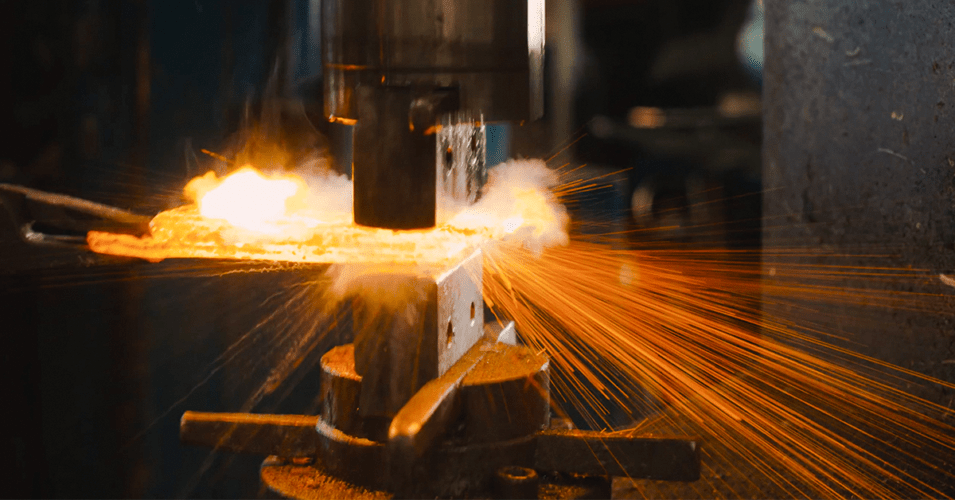The aerospace industry is a realm where precision and performance are paramount. From the engines that propel aircraft to the structural components that keep them aloft, every detail counts. One manufacturing technique that plays a crucial role in creating high-performance aerospace components is hot forging. In this blog, we’ll delve into the fascinating world of hot forging in aerospace and explore how this process is used to craft essential components for the skies.
The Basics of Hot Forging
Hot forging is a metalworking process that involves shaping metal at high temperatures, typically between 1,000°C (1,832°F) and 1,300°C (2,372°F). The process begins with a piece of metal, often in the form of a billet or a bar, being heated to its plastic deformation temperature. This temperature allows the material to become malleable and easily shaped. Once heated, the metal is placed in a die, which is a tool that imparts the desired shape to the material through the application of pressure. The force applied forces the metal to flow and take on the shape of the die, resulting in a forged component.
Benefits of Hot Forging in Aerospace
- Strength and Durability: Hot forging produces components with exceptional strength and durability. The high temperatures and pressures involved in the process align the grain structure of the metal, enhancing its mechanical properties. Aerospace components must withstand extreme conditions, and hot forging ensures they are up to the task.
- Precision: Hot forging allows for precise control over the shape and dimensions of the final component. This level of precision is crucial in aerospace, where components need to fit perfectly and perform flawlessly.
- Material Efficiency: Hot forging minimizes material waste. By shaping the metal directly into the desired form, there’s less need for additional machining, which can result in significant material savings, especially when dealing with expensive aerospace-grade alloys.
- Cost-Effective: Although the initial setup costs for hot forging can be high, it often proves to be cost-effective in high-volume production. The durability and longevity of forged components reduce maintenance and replacement costs over time.
Applications in Aerospace
Hot forging is employed extensively in the aerospace industry to produce a wide range of critical components. Here are some notable examples:
- Aircraft Engine Components: Engine components like turbine blades, shafts, and casings are subjected to extreme temperatures and stresses. Hot forging ensures these parts have the necessary strength and resistance to operate reliably.
- Landing Gear Components: Landing gear components such as landing gear struts and connecting rods must withstand heavy loads and shocks during takeoff and landing. Hot forging creates parts that can endure these harsh conditions.
- Wing and Fuselage Components: Various structural components, including wing spars and fuselage frames, are often hot forged. These parts provide the structural integrity needed for safe and efficient flight.
- Fasteners and Fittings: Even small components like bolts, nuts, and fittings are commonly forged in aerospace. Their reliability is critical to the overall safety of the aircraft.
Advanced Techniques in Aerospace Forging
As technology continues to advance, aerospace manufacturers are employing advanced techniques to further enhance the benefits of hot forging:
- Near-Net Shape Forging: This technique aims to produce components that require minimal post-forging machining, reducing material waste and production time.
- Superplastic Forming: In this process, some aerospace materials are heated to high temperatures and can be stretched or formed into complex shapes without cracking or breaking.
- Hybrid Forging: Combining hot forging with other manufacturing processes, such as additive manufacturing, can create highly customized and lightweight aerospace components.
Hot forging is a fundamental manufacturing process in the aerospace industry, essential for crafting components that meet the demanding requirements of modern aviation. With its ability to deliver strength, precision, and durability, hot forging ensures that the critical parts that make up an aircraft can withstand the rigors of flight. As technology continues to evolve, we can expect even more innovative applications of hot forging in aerospace, contributing to the ongoing advancement of aviation technology and safety in the skies.
